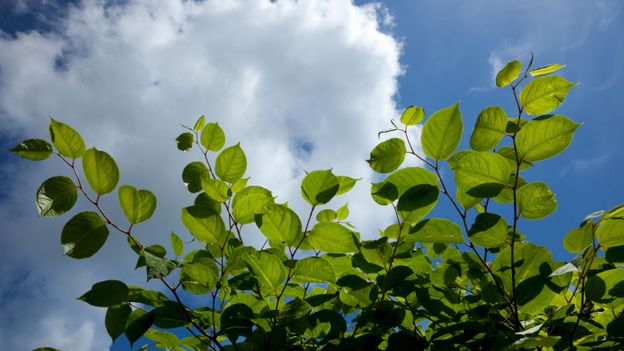Core Concepts
The author explores the history, impact, and challenges of eradicating the invasive Japanese knotweed plant, highlighting its resilience and financial consequences.
Abstract
Japanese knotweed, introduced as an ornamental plant in the 19th century, has become a pervasive problem globally due to its ability to regenerate from tiny fragments. Its rapid growth rate and resistance to eradication methods make it a significant threat to ecosystems and property values. Despite efforts to control it with chemicals or digging, the plant's deep roots and lateral spread pose ongoing challenges for complete removal.
The alien shrub that can't be stopped
Stats
Japanese knotweed can regrow from a root fragment as small as 0.3g (0.01oz).
The presence of a single stem of Japanese knotweed can reduce a house's value by 5-15% in the UK.
Each spring, Japanese knotweed plants can produce up to 150,000 seeds per stem.
Quotes
"It could grow back even though it may appear dead." - Kevin Callaghan
"You've got to admire the plant really." - Dan Eastwood
"We did work for the forestry commission one time in Manchester with giant hogweed," says Callaghan, "and that [patch] was a good few thousand metres square [around 10,000sq ft]."
Key Insights Distilled From
by at www.bbc.com 10-06-2022
https://www.bbc.com/future/article/20221006-the-race-to-kill-the-worlds-most-invasive-weed
Deeper Inquiries
How can communities collaborate to address the widespread impact of invasive species beyond individual property boundaries?
Communities can collaborate by establishing coordinated eradication efforts that go beyond individual property boundaries. This can involve creating local task forces or committees dedicated to addressing invasive species, sharing resources and information among neighbors, organizing community clean-up events focused on removing invasive plants like Japanese knotweed from public spaces, and working with local authorities or environmental organizations to implement larger-scale control measures. By fostering a sense of collective responsibility and cooperation, communities can more effectively combat the spread of invasive species across neighborhoods and shared areas.
What ethical considerations should be taken into account when attempting to eradicate invasive species like Japanese knotweed?
When attempting to eradicate invasive species like Japanese knotweed, several ethical considerations must be taken into account. Firstly, it is essential to prioritize methods that minimize harm to native flora and fauna while targeting the invader. Utilizing chemical treatments or mechanical removal techniques should be done carefully to prevent unintended consequences for the surrounding ecosystem. Additionally, efforts should focus on long-term solutions rather than short-term fixes that may have negative repercussions in the future. It is also crucial to consider the potential impacts on human health and well-being during eradication processes, ensuring that any methods used are safe for both individuals involved in removal activities and nearby residents.
How can historical introductions of alien species inform current conservation practices?
The historical introductions of alien species provide valuable insights that can inform current conservation practices. By studying past instances where exotic plants or animals were brought into new environments with detrimental effects, conservationists can better understand the risks associated with introducing non-native species today. Learning from mistakes made in previous eras allows for more informed decision-making regarding biosecurity measures, risk assessments for potential introductions, and strategies for managing existing invasive populations. Historical data also highlights the importance of proactive monitoring and early intervention when dealing with alien species to prevent irreversible damage to native ecosystems.
0
